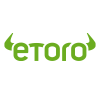Chromia
CHR0.23%
About Chromia
Smart Contract Platform
Industry Group
Single Chain
Single Chain
The Chromia price is $0.17, a change of 0.23% over the past 24 hours as of 8:45 a.m. The recent price action in Chromia left the tokens market capitalization at $96,851,453.56. So far this year, Chromia has a change of 61.93%. Chromia is classified as a Smart Contract Platform under CoinDesks Digital Asset Classification Standard (DACS).
CHR is the native coin of Chromia, a network of blockchains in the process of being created. These blockchains are based on so-called relational networks – a widely used database structure that precedes blockchain technology.
CHR price
CHR’s maximum supply was 1 billion coins at launch in 2019, but in May 2020 the Chromia project burned 22 million CHR, making the total maximum circulating supply 978 million CHR.
Of that 978 million, 4% was sold in an initial exchange offering, 38.06% is reserved for an ecosystem fund, 25% will be used to promote the blockchain and 17.94% was sold in a private sale. The team, founders and the project’s advisors kept 10% and the remainder was kept by the protocol.
Over 95% of the tokens will be in circulation by 2025. Funds allocated to advisors, as well as the promotion and ecosystem funds, “will continue to be distributed in 2025 and beyond,” according to Chromia.
CHR started trading in May 2019 at 7 cents. It skyrocketed in value in 2021 to 56 cents in March of that year, and then to an all-time high of $1.50 in November 2021. In 2022 CHR collapsed, just like the rest of the crypto market. By June 2022, CHR had slumped to 23 cents.
How does CHR work?
Relational databases are made up of tables – columns and rows of data. They’re “relational” because it’s possible to query several of these tables to form new tables.
The most popular language for searching through relational databases is called SQL. Smart contracts on Chromia are written in Rell, a computer language based on SQL.
Relational databases make it easy to sift through huge amounts of information to generate reports. As an example, a hospital might use SQL to query for children whose parents have cancer to produce a mailing list.
Chromia’s relational blockchains apply the same principle to blockchains. This blockchain, according to Chromia, should accomplish two things: First, it should make Chromia far faster than conventional blockchains, like the market leader, Ethereum. It claims to be capable of avoiding the bottlenecks that have slowed down that network and made Ethereum expensive to use. Second, Chromia should be ideal for maintaining public records – the kind that are often stored in relational databases but maintained by centralized hosting infrastructure.
One example of an institution already building on Chromia is LAC PropertyChain, which records public property rights in Latin America and the Caribbean on Chromia’s public databases.
Key events and governance
The Chromia blockchain is being built by a company called ChromaWay. It was founded in 2014 by Chief Technology Officer Alex Mizrahi, Chief Operating Officer Or Perelman, CEO Henrik Hjelte and Iddo Bentov.
ChromaWay created the first relational blockchain, Postchain, in 2017. Postchain works just like a regular database but uses blockchain’s decentralized consensus mechanisms to work through transactions. Postchain was only designed for businesses but Chromia will be public, meaning anyone can use it.
Chromia’s mainnet hasn’t launched yet – its token is live, issued as a token on the Ethereum blockchain as an ERC-20 token and on the BNB Smart Chain (BSC) as a BEP-20 token. It hasn’t announced a launch date for the mainnet.
When Chromia’s mainnet launches, CHR will be used as the blockchain’s native currency, functioning in a similar way to Ethereum.
However, the ERC-20 version of CHR can already be used for staking. On Chromia, staking protects the Chromia network against attacks and turns CHR into a governance token. It also adds CHR to a treasury that can lend CHR to people that need it.
While Chromia is a standalone blockchain, it also functions as a layer 2 blockchain for Binance Smart Chain and Ethereum. Chromia is compatible with the Ethereum Virtual Machine, meaning that blockchain developers can redeploy applications built for Ethereum on Chromia without much extra legwork.
ChromaWay has disclosed a $10 million funding round led by True Global Ventures (TGV), according to data from Crunchbase.
Trending Assets
RACA
BABYDOGE
HOT
KISHU
SAITAMA
Bitcoin Calculator
CoinDesk’s Bitcoin and Cryptocurrency Calculator determines the exchange rates between major fiat currencies and cryptocurrencies – including BTC, BCH, ETH and XRP to USD, EUR, GBP, IDR and NGN – with up to six decimal places of accuracy. Conversion rates are based on CoinDesk’s Bitcoin Price Index and the price indices of other digital assets. World currency prices are based on rates obtained via Open Exchange Rates.
Research Reports
Diving in deeper on cryptocurrency.



:format(jpg)/cloudfront-us-east-1.images.arcpublishing.com/coindesk/SWPGSD2NDVHKDHCUUFCLUIOZ54.png)
:format(jpg)/cloudfront-us-east-1.images.arcpublishing.com/coindesk/ZDC3FRMKDBCHDMRLSDPLCIVTUE.jpg)
:format(jpg)/cloudfront-us-east-1.images.arcpublishing.com/coindesk/RONYEB2JQ5A35FLPSB5QKK365U.jpg)